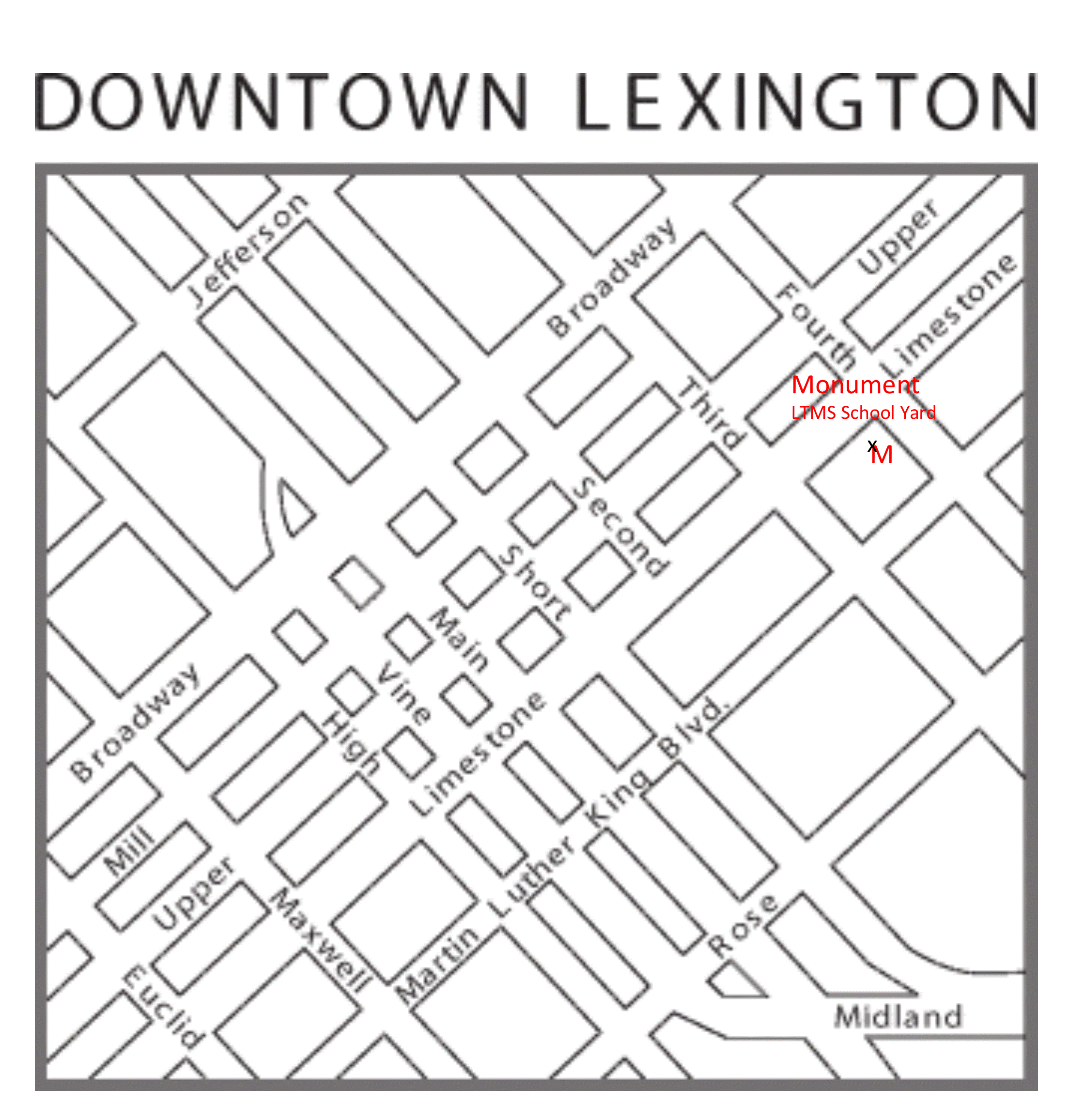The Inspiration
The Inspiration
Inspiration for the monument came from East End neighborhood activist Sherry Maddoc. Sherry believed that: ‘Our city has untold stories. The rich history of Lexington’s East End has yet to be celebrated. At the corner of Fourth and N. Limestone Streets there is an open space waiting to host the new monument commemorating the historic path to freedom for many of Lexington’s enslaved people. The path is the Underground Railroad.’
North Limestone Street joined the Maysville Road. In the years prior to the Civil War, if an escaped slave reached Maysville, it was possible to cross the Ohio River to potential freedom.
The neighborhood had originally planned to plant more trees along this North Limestone corridor. Thanks to Sherry Maddoc’s idea, this monument has been incorporated into the plan with the full support of the neighbors. Lexington will long be grateful for her inspiration.
From Slavery to Freedom
For more than 30 years, Lewis and Harriet Hayden were held in slavery in and around Lexington. Lewis’s first wife, Esther and their child had been sold “down the river” to a slaveholder in the Deep South and Lewis never saw them again. To prevent a recurrence of such a horrific situation, Lewis chose to escape from the bonds of slavery with his second wife, Harriet Bell, and their son, Joseph. The family was aided by Delia Webster, a Lexington school teacher, and Calvin Fairbanks, a minister from Ohio. Webster and Fairbanks transported the Hayden family to Maysville and across the Ohio River to a station on the Underground Railroad. As they departed Lexington, the group passed the home where Lewis had been enslaved by Rev. Adam Rankin. The home exists today within sight of the proposed monument on Limestone Street.
After a stop in Detroit, the family reached Boston, where Lewis and Harriet became leaders in the anti-slavery movement. More than 100 escaped slaves found shelter in their home that served as a “station” on the Underground Railroad. In 1863, Lewis persuaded his friend, Massachusetts Governor John Andrew, to push for inclusion of black men in the Union army. Eventually three regiments of black soldiers, many recruited by Lewis Hayden, represented the State of Massachusetts in the war that would end slavery. After the war, Lewis became the first black man elected to the Massachusetts legislature.
Unfortunately, the story of Lewis and Harriet Hayden and others who endeavored to eliminate slavery in our area has been all but lost to history. Lexington’s monument to the struggle for freedom will testify to the courage of those persons, both black and white, who risked their lives to free themselves and others.

